Jia Wang
Uncertainty-Aware Semantic Decoding for LLM-Based Sequential Recommendation
Aug 10, 2025



Abstract:Large language models have been widely applied to sequential recommendation tasks, yet during inference, they continue to rely on decoding strategies developed for natural language processing. This creates a mismatch between text-generation objectives and recommendation next item selection objectives. This paper addresses this limitation by proposing an Uncertainty-aware Semantic Decoding (USD) framework that combines logit-based clustering with adaptive scoring to improve next-item predictions. Our approach clusters items with similar logit vectors into semantic equivalence groups, then redistributes probability mass within these clusters and computes entropy across them to control item scoring and sampling temperature during recommendation inference. Experiments on Amazon Product datasets (six domains) gains of 18.5\% in HR@3, 11.9\% in NDCG@3, and 10.8\% in MRR@3 compared to state-of-the-art baselines. Hyperparameter analysis confirms the optimal parameters among various settings, and experiments on H\&M, and Netflix datasets indicate that the framework can adapt to differing recommendation domains. The experimental results confirm that integrating semantic clustering and uncertainty assessment yields more reliable and accurate recommendations.
TableDreamer: Progressive and Weakness-guided Data Synthesis from Scratch for Table Instruction Tuning
Jun 10, 2025Abstract:Despite the commendable progress of recent LLM-based data synthesis methods, they face two limitations in generating table instruction tuning data. First, they can not thoroughly explore the vast input space of table understanding tasks, leading to limited data diversity. Second, they ignore the weaknesses in table understanding ability of the target LLM and blindly pursue the increase of data quantity, resulting in suboptimal data efficiency. In this paper, we introduce a progressive and weakness-guided data synthesis framework tailored for table instruction tuning, named TableDreamer, to mitigate the above issues. Specifically, we first synthesize diverse tables and related instructions as seed data, and then perform an iterative exploration of the input space under the guidance of the newly identified weakness data, which eventually serve as the final training data for fine-tuning the target LLM. Extensive experiments on 10 tabular benchmarks demonstrate the effectiveness of the proposed framework, which boosts the average accuracy of Llama3.1-8B-instruct by 11.62% (49.07% to 60.69%) with 27K GPT-4o synthetic data and outperforms state-of-the-art data synthesis baselines which use more training data. The code and data is available at https://github.com/SpursGoZmy/TableDreamer
Exploring bidirectional bounds for minimax-training of Energy-based models
Jun 05, 2025Abstract:Energy-based models (EBMs) estimate unnormalized densities in an elegant framework, but they are generally difficult to train. Recent work has linked EBMs to generative adversarial networks, by noting that they can be trained through a minimax game using a variational lower bound. To avoid the instabilities caused by minimizing a lower bound, we propose to instead work with bidirectional bounds, meaning that we maximize a lower bound and minimize an upper bound when training the EBM. We investigate four different bounds on the log-likelihood derived from different perspectives. We derive lower bounds based on the singular values of the generator Jacobian and on mutual information. To upper bound the negative log-likelihood, we consider a gradient penalty-like bound, as well as one based on diffusion processes. In all cases, we provide algorithms for evaluating the bounds. We compare the different bounds to investigate, the pros and cons of the different approaches. Finally, we demonstrate that the use of bidirectional bounds stabilizes EBM training and yields high-quality density estimation and sample generation.
* accepted to IJCV
Beyond Face Swapping: A Diffusion-Based Digital Human Benchmark for Multimodal Deepfake Detection
May 22, 2025Abstract:In recent years, the rapid development of deepfake technology has given rise to an emerging and serious threat to public security: diffusion model-based digital human generation. Unlike traditional face manipulation methods, such models can generate highly realistic videos with consistency through multimodal control signals. Their flexibility and covertness pose severe challenges to existing detection strategies. To bridge this gap, we introduce DigiFakeAV, the first large-scale multimodal digital human forgery dataset based on diffusion models. Employing five latest digital human generation methods (Sonic, Hallo, etc.) and voice cloning method, we systematically produce a dataset comprising 60,000 videos (8.4 million frames), covering multiple nationalities, skin tones, genders, and real-world scenarios, significantly enhancing data diversity and realism. User studies show that the confusion rate between forged and real videos reaches 68%, and existing state-of-the-art (SOTA) detection models exhibit large drops in AUC values on DigiFakeAV, highlighting the challenge of the dataset. To address this problem, we further propose DigiShield, a detection baseline based on spatiotemporal and cross-modal fusion. By jointly modeling the 3D spatiotemporal features of videos and the semantic-acoustic features of audio, DigiShield achieves SOTA performance on both the DigiFakeAV and DF-TIMIT datasets. Experiments show that this method effectively identifies covert artifacts through fine-grained analysis of the temporal evolution of facial features in synthetic videos.
SAM-Guided Robust Representation Learning for One-Shot 3D Medical Image Segmentation
Apr 29, 2025
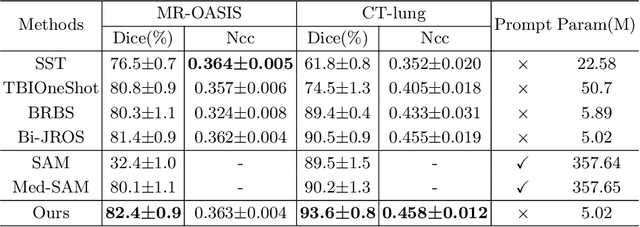


Abstract:One-shot medical image segmentation (MIS) is crucial for medical analysis due to the burden of medical experts on manual annotation. The recent emergence of the segment anything model (SAM) has demonstrated remarkable adaptation in MIS but cannot be directly applied to one-shot medical image segmentation (MIS) due to its reliance on labor-intensive user interactions and the high computational cost. To cope with these limitations, we propose a novel SAM-guided robust representation learning framework, named RRL-MedSAM, to adapt SAM to one-shot 3D MIS, which exploits the strong generalization capabilities of the SAM encoder to learn better feature representation. We devise a dual-stage knowledge distillation (DSKD) strategy to distill general knowledge between natural and medical images from the foundation model to train a lightweight encoder, and then adopt a mutual exponential moving average (mutual-EMA) to update the weights of the general lightweight encoder and medical-specific encoder. Specifically, pseudo labels from the registration network are used to perform mutual supervision for such two encoders. Moreover, we introduce an auto-prompting (AP) segmentation decoder which adopts the mask generated from the general lightweight model as a prompt to assist the medical-specific model in boosting the final segmentation performance. Extensive experiments conducted on three public datasets, i.e., OASIS, CT-lung demonstrate that the proposed RRL-MedSAM outperforms state-of-the-art one-shot MIS methods for both segmentation and registration tasks. Especially, our lightweight encoder uses only 3\% of the parameters compared to the encoder of SAM-Base.
DPGP: A Hybrid 2D-3D Dual Path Potential Ghost Probe Zone Prediction Framework for Safe Autonomous Driving
Apr 23, 2025



Abstract:Modern robots must coexist with humans in dense urban environments. A key challenge is the ghost probe problem, where pedestrians or objects unexpectedly rush into traffic paths. This issue affects both autonomous vehicles and human drivers. Existing works propose vehicle-to-everything (V2X) strategies and non-line-of-sight (NLOS) imaging for ghost probe zone detection. However, most require high computational power or specialized hardware, limiting real-world feasibility. Additionally, many methods do not explicitly address this issue. To tackle this, we propose DPGP, a hybrid 2D-3D fusion framework for ghost probe zone prediction using only a monocular camera during training and inference. With unsupervised depth prediction, we observe ghost probe zones align with depth discontinuities, but different depth representations offer varying robustness. To exploit this, we fuse multiple feature embeddings to improve prediction. To validate our approach, we created a 12K-image dataset annotated with ghost probe zones, carefully sourced and cross-checked for accuracy. Experimental results show our framework outperforms existing methods while remaining cost-effective. To our knowledge, this is the first work extending ghost probe zone prediction beyond vehicles, addressing diverse non-vehicle objects. We will open-source our code and dataset for community benefit.
Information Density Principle for MLLM Benchmarks
Mar 13, 2025Abstract:With the emergence of Multimodal Large Language Models (MLLMs), hundreds of benchmarks have been developed to ensure the reliability of MLLMs in downstream tasks. However, the evaluation mechanism itself may not be reliable. For developers of MLLMs, questions remain about which benchmark to use and whether the test results meet their requirements. Therefore, we propose a critical principle of Information Density, which examines how much insight a benchmark can provide for the development of MLLMs. We characterize it from four key dimensions: (1) Fallacy, (2) Difficulty, (3) Redundancy, (4) Diversity. Through a comprehensive analysis of more than 10,000 samples, we measured the information density of 19 MLLM benchmarks. Experiments show that using the latest benchmarks in testing can provide more insight compared to previous ones, but there is still room for improvement in their information density. We hope this principle can promote the development and application of future MLLM benchmarks. Project page: https://github.com/lcysyzxdxc/bench4bench
Constrained Gaussian Wasserstein Optimal Transport with Commutative Covariance Matrices
Mar 05, 2025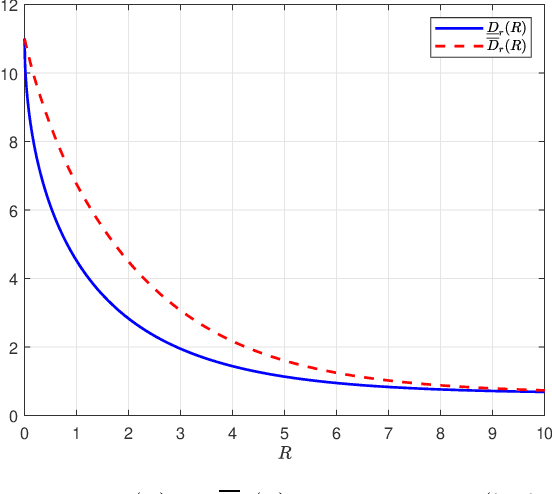
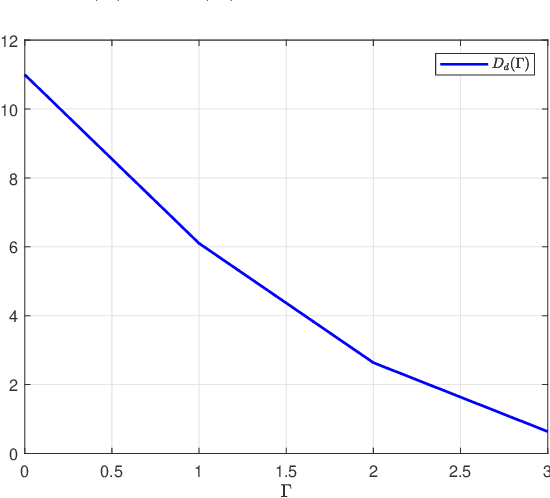
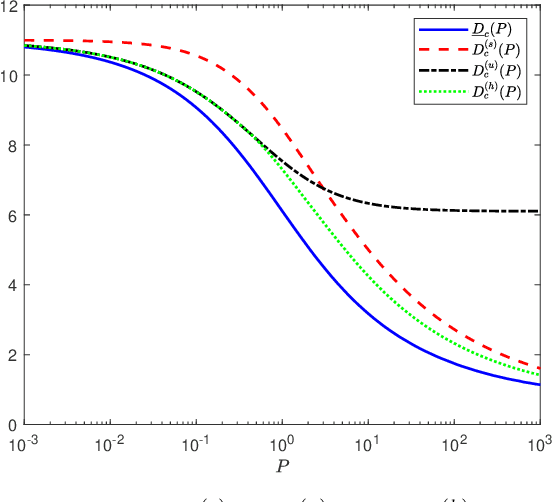
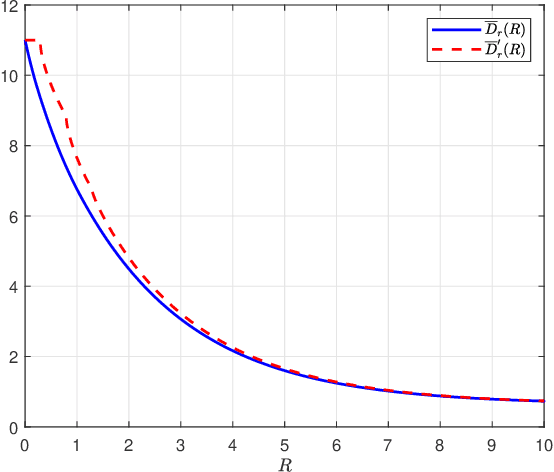
Abstract:Optimal transport has found widespread applications in signal processing and machine learning. Among its many equivalent formulations, optimal transport seeks to reconstruct a random variable/vector with a prescribed distribution at the destination while minimizing the expected distortion relative to a given random variable/vector at the source. However, in practice, certain constraints may render the optimal transport plan infeasible. In this work, we consider three types of constraints: rate constraints, dimension constraints, and channel constraints, motivated by perception-aware lossy compression, generative principal component analysis, and deep joint source-channel coding, respectively. Special attenion is given to the setting termed Gaussian Wasserstein optimal transport, where both the source and reconstruction variables are multivariate Gaussian, and the end-to-end distortion is measured by the mean squared error. We derive explicit results for the minimum achievable mean squared error under the three aforementioned constraints when the covariance matrices of the source and reconstruction variables commute.
UAR-NVC: A Unified AutoRegressive Framework for Memory-Efficient Neural Video Compression
Mar 04, 2025Abstract:Implicit Neural Representations (INRs) have demonstrated significant potential in video compression by representing videos as neural networks. However, as the number of frames increases, the memory consumption for training and inference increases substantially, posing challenges in resource-constrained scenarios. Inspired by the success of traditional video compression frameworks, which process video frame by frame and can efficiently compress long videos, we adopt this modeling strategy for INRs to decrease memory consumption, while aiming to unify the frameworks from the perspective of timeline-based autoregressive modeling. In this work, we present a novel understanding of INR models from an autoregressive (AR) perspective and introduce a Unified AutoRegressive Framework for memory-efficient Neural Video Compression (UAR-NVC). UAR-NVC integrates timeline-based and INR-based neural video compression under a unified autoregressive paradigm. It partitions videos into several clips and processes each clip using a different INR model instance, leveraging the advantages of both compression frameworks while allowing seamless adaptation to either in form. To further reduce temporal redundancy between clips, we design two modules to optimize the initialization, training, and compression of these model parameters. UAR-NVC supports adjustable latencies by varying the clip length. Extensive experimental results demonstrate that UAR-NVC, with its flexible video clip setting, can adapt to resource-constrained environments and significantly improve performance compared to different baseline models.
Multi-Dimensional Quality Assessment for Text-to-3D Assets: Dataset and Model
Feb 24, 2025Abstract:Recent advancements in text-to-image (T2I) generation have spurred the development of text-to-3D asset (T23DA) generation, leveraging pretrained 2D text-to-image diffusion models for text-to-3D asset synthesis. Despite the growing popularity of text-to-3D asset generation, its evaluation has not been well considered and studied. However, given the significant quality discrepancies among various text-to-3D assets, there is a pressing need for quality assessment models aligned with human subjective judgments. To tackle this challenge, we conduct a comprehensive study to explore the T23DA quality assessment (T23DAQA) problem in this work from both subjective and objective perspectives. Given the absence of corresponding databases, we first establish the largest text-to-3D asset quality assessment database to date, termed the AIGC-T23DAQA database. This database encompasses 969 validated 3D assets generated from 170 prompts via 6 popular text-to-3D asset generation models, and corresponding subjective quality ratings for these assets from the perspectives of quality, authenticity, and text-asset correspondence, respectively. Subsequently, we establish a comprehensive benchmark based on the AIGC-T23DAQA database, and devise an effective T23DAQA model to evaluate the generated 3D assets from the aforementioned three perspectives, respectively.
 Add to Chrome
Add to Chrome Add to Firefox
Add to Firefox Add to Edge
Add to Edge